Should You Use Weed Barrier Fabric?
I Introduction for the weed barrier fabric

Weeds are an unsightly nuisance in any garden. To keep these pesky plants at bay, consider installing a weed barrier. Also known as landscape fabric, weed barrier is a garden fabric usually made of woven or non-woven polypropylene. Woven barriers are the most common; their mesh texture is thick enough to prevent weeds from infiltrating your garden bed while allowing water, fertilizer, and oxygen to seep through.
The best weed barrier options can save you hours of time weeding your vegetable and ornamental gardens. They’re effective, reliable, and durable, providing long-lasting protection so you can spend less time pulling up weeds and more time enjoying your verdant outdoor space.
1 BEST OVERALL: ECOgardener Premium 5oz Pro Garden Weed Barrier
2 BEST BANG FOR THE BUCK: GardenMate Woven Weed Control Fabric
3 BEST PROFESSIONAL-GRADE: Dewitt P5 Weed-Barrier Woven Landscape Fabric
4 BEST HEAVY-DUTY: Dewitt 12-Year Weed Barrier Fabric 12YR450
5 BEST NATURAL: Burlapper Burlap Garden Fabric
6 BEST FOR LARGE AREAS: AGTEK Landscape Fabric
7 BEST FOR SUNNY AREAS: DeWitt SBLT4300 Sunbelt Ground Cover Weed Barrier
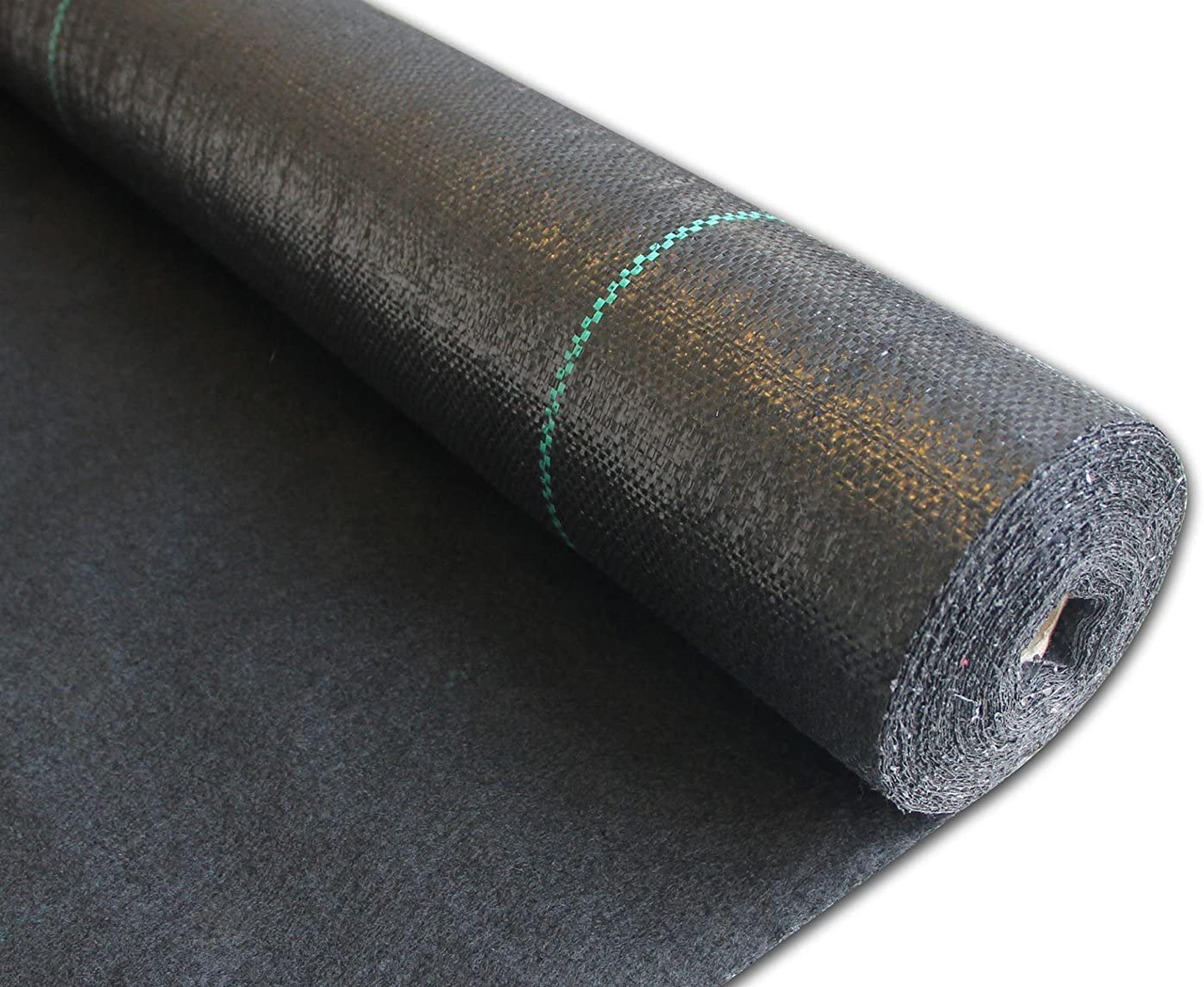
II What to Consider When Choosing the Best Weed Barrier&Premium Landscape Fabric
Weed barriers are one of the most popular methods for preventing weeds without the use of chemicals. They’re a cost-effective way to keep weeds at bay, helping to improve the look of your garden and, in vegetable gardens, even leading to a better yield by reducing competition in your soil. A good pick will be effective and durable and made to reduce weeds for several years. When shopping for the best weed barrier for your garden, consider the barrier’s material, durability, size, and eco-friendliness.
1 Material
Weed barriers come in woven and non-woven materials. Most weed barriers are made from polypropylene or polyester.
Nonwoven weed barriers are a less-permeable option, excellent for long-term weed control. Since they aren’t naturally breathable or penetrable, they are less popular for garden and flower beds. Instead, they are best for areas you don’t want any plants to grow, like pathways or in rock or gravel landscaping. Polypropylene and polyester are the most common materials for nonwoven barriers.
As their name suggests, woven barriers are made from woven fabric or other materials to create a mesh-like weave. Woven weed barriers block sunlight, preventing weed growth. But unlike nonwoven options, they have tiny spaces that allow air and water to penetrate the soil for plant growth, making them ideal for garden beds. Perforated weed barriers perform similarly to woven barriers, but instead of a weave, they have small pinprick holes that allow water and air through. Polypropylene and burlap are the most common materials used for woven barriers.

2 Durability and Lifespan
A quality weed barrier should last a minimum of 5 years and up to 20 years or more. The best weed barrier options are treated to last through wear and tear as well as through rainy and sunny conditions. This ensures that they don’t tear easily underfoot and won’t break down after a season of rainy weather or exposure to direct sunlight.
Weed barriers come in various materials and thickness levels, both of which contribute to their durability and lifespan. The thicker and more durable the material, the longer the barrier should last. For example, woven materials like woven polypropylene, burlap, and linen tend to break down faster than thick, nonwoven polypropylene, which can take decades to break down.
Be sure to consider the appropriate thickness for the job. For example, a thick barrier is a durable pick under a gravel pathway, but the same barrier may be too thick for a vegetable or flower garden. For the latter situation, a thinner, more permeable weed barrier may be a better pick, even if it is less durable.
3 Size of Roll
Most weed barriers come in convenient rolls that are easy to transport and use. A weed barrier roll should display the fabric size, which you can use to calculate how much ground a roll can cover. Make sure to account for roughly an 8-inch overlap for areas that require several pieces of weed barrier fabric.
Weed barrier rolls are typically 3 to 6 feet wide and can range from 50 to upward of 200 feet long. For large coverage areas, consider a wider roll to cover areas faster.
When comparing similar-sized barriers, a thicker and heavier roll tends to mean thicker and longer-lasting fabric. As is the case with most home products, professional-grade products tend to be costlier, but they can have added benefits like more durable materials or better UV resistance.
4 Eco-Friendly
The most common weed barriers you can buy at the store are made from materials like polypropylene and polyester, which are not particularly eco-friendly. Barriers made from natural fibers like burlap or linen can be a more eco-friendly option since they break down faster than plastics. Regardless of the material, by choosing a durable option, using the barrier for as long as possible, and disposing of it correctly, you can reduce your ecological footprint.
For the most eco-friendly option, consider natural barriers like mulch, straw, peat moss, or other organic materials. Using natural barriers requires more work, but since these materials are biodegradable, they are the most environmentally conscious option.
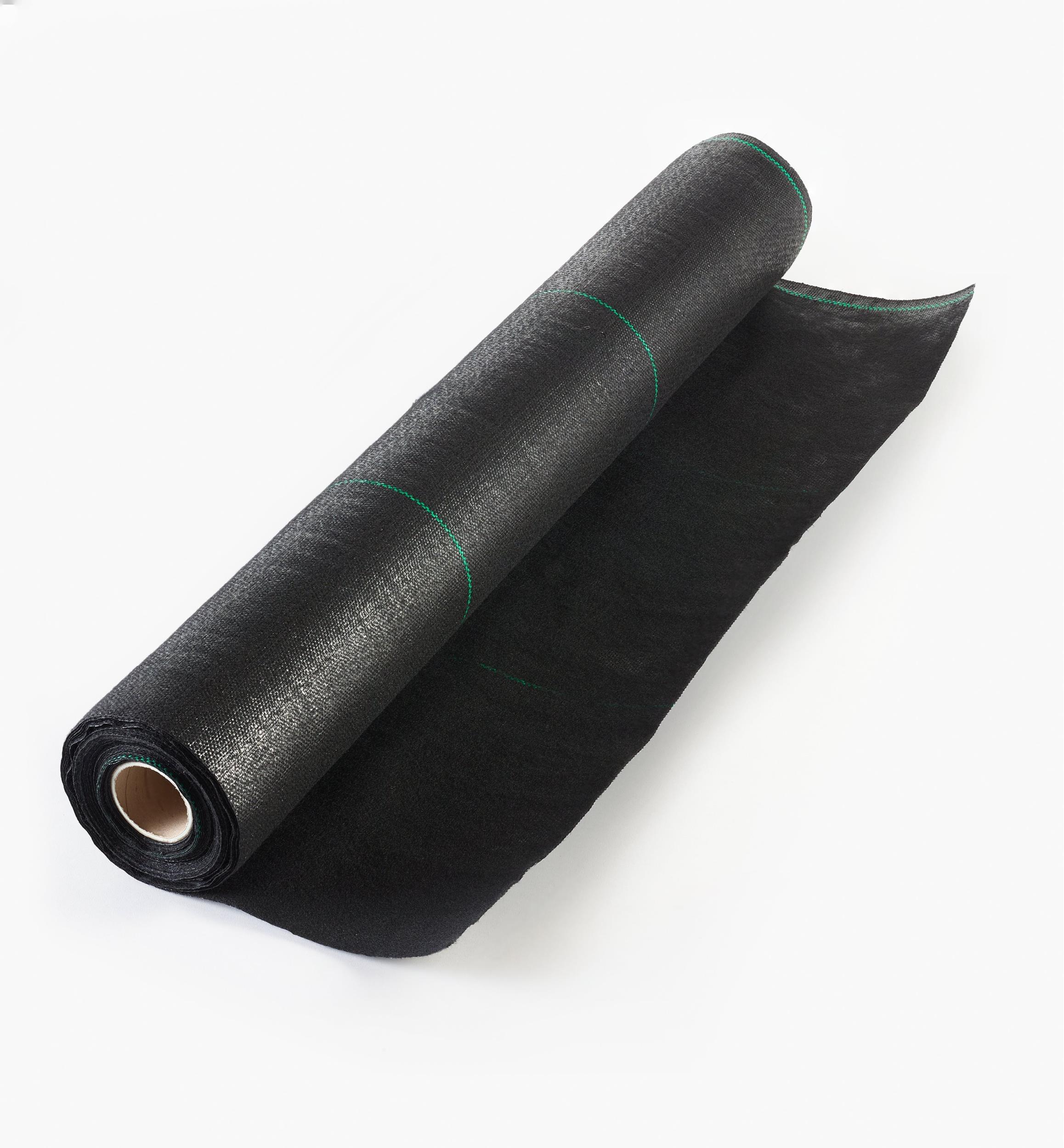
5 UV Resistant
UV light is the enemy of any outdoor fabric and will eventually cause all exposed weed barriers to degrade. There are several qualities that can help a weed barrier resist UV damage.
While some high-quality weed barriers are not advertised as UV resistant, they are still made from durable materials that can last 5 years or more in a garden. To improve UV durability, consider covering the weed barrier with mulch, gravel, rocks, or other organic coverings. This decreases the barrier’s exposure to UV rays and can help it last longer.
When it comes to UV resistance, there are two options. Some materials are innately resistant to UV and are usually labeled as UV resistant. Others are UV stabilized, which means they are treated with a UV barrier to better withstand UV degradation.
6 Our Top Picks
Weed barriers are a top pick for gardeners who want to reduce weeding maintenance while also reducing or nixing the need for herbicides. The best weed barriers reliably inhibit weed growth and help retain moisture and soil health. Plus, they are made to withstand the outdoors, so you won’t need to replace them for several seasons.

III Different types for Weed Mat Fabric
1 ECOgardener Premium 5oz Pro Garden Weed Barrier
High strength and high permeability make this weed barrier from ECOgardener an excellent pick. It’s tough enough to handle outdoor conditions while also letting vital nutrients through to your precious plants.
A dual-layer polypropylene design features a woven layer and a needle-punched perforated layer. The two layers give it superior durability, effectively block light to prevent weed growth, and help to conserve water and soil moisture.
This versatile barrier aims to bring the best of both worlds: It’s heavy enough to stifle weed growth, but it’s a relatively lightweight option compared to thicker barriers. It’s easy to roll out and cut for a hassle-free setup. Plus, the weed barrier is striped for simple plant alignment. This roll measures 4 feet wide by 50 feet long, but various other sizes are available.
2 GardenMate Woven Weed Control Fabric
For weed control on a budget, consider this weed barrier roll from GardenMate. Measuring 6 feet wide by 33 feet long, it’s a cost-friendly choice for garden beds, landscaping projects, pathways, and under outdoor fixtures.
This weed control fabric is made of heavy-duty woven polypropylene, which is versatile and flexible for a range of projects. The tight weave blocks sunlight to prevent weed growth while maintaining permeability to let air, water, and nutrients pass through into your garden.
For long-lasting protection, this weed control fabric is UV stabilized to reduce sun degradation. Since it’s protected, it can be used in direct sunlight, in greenhouses, and anywhere outdoors without fear of it breaking down too quickly.

3 Dewitt P5 Weed-Barrier Woven Landscape Fabric
Designed for professional and commercial use, this weed mat from Dewitt is a heavy-duty and effective option for serious gardeners. Used by landscape architects, government agencies, and professional contractors, this weed barrier is a sturdy and long-lasting choice.
Each roll measures 5 feet wide by 250 feet long and is made from woven polypropylene and needle-punched fabric. This durable fabric lets water, air, and nutrients through but is an effective weed block—and without the need for chemicals. This thick landscape fabric won’t rot or mildew in damp areas, and it’s highly UV resistant to prevent it from degrading in sunny conditions. To assist in planting garden beds, it is striped every 12 inches to help with alignment.
4 Burlapper Burlap Garden Fabric
For eco-conscious shoppers, using plastic materials in the garden may be an environmental or health concern. Those looking for a natural weed covering option should consider this burlap garden fabric from the Burlapper Store. Made of 100 percent woven jute, this burlap fabric is naturally biodegradable and an eco-friendly alternative to polypropylene and other plastic fabrics.
Burlap is also naturally multipurpose, and this 40-inch by 30-foot sheet can also be used for wrapping trees and protecting bushes, shrubs, and other plants from harsh weather. It’s also an excellent option to protect grass seeds and control soil erosion. The mesh-like weave of this burlap barrier strikes a good balance between plant protection and water permeability and aeration for a healthier garden.
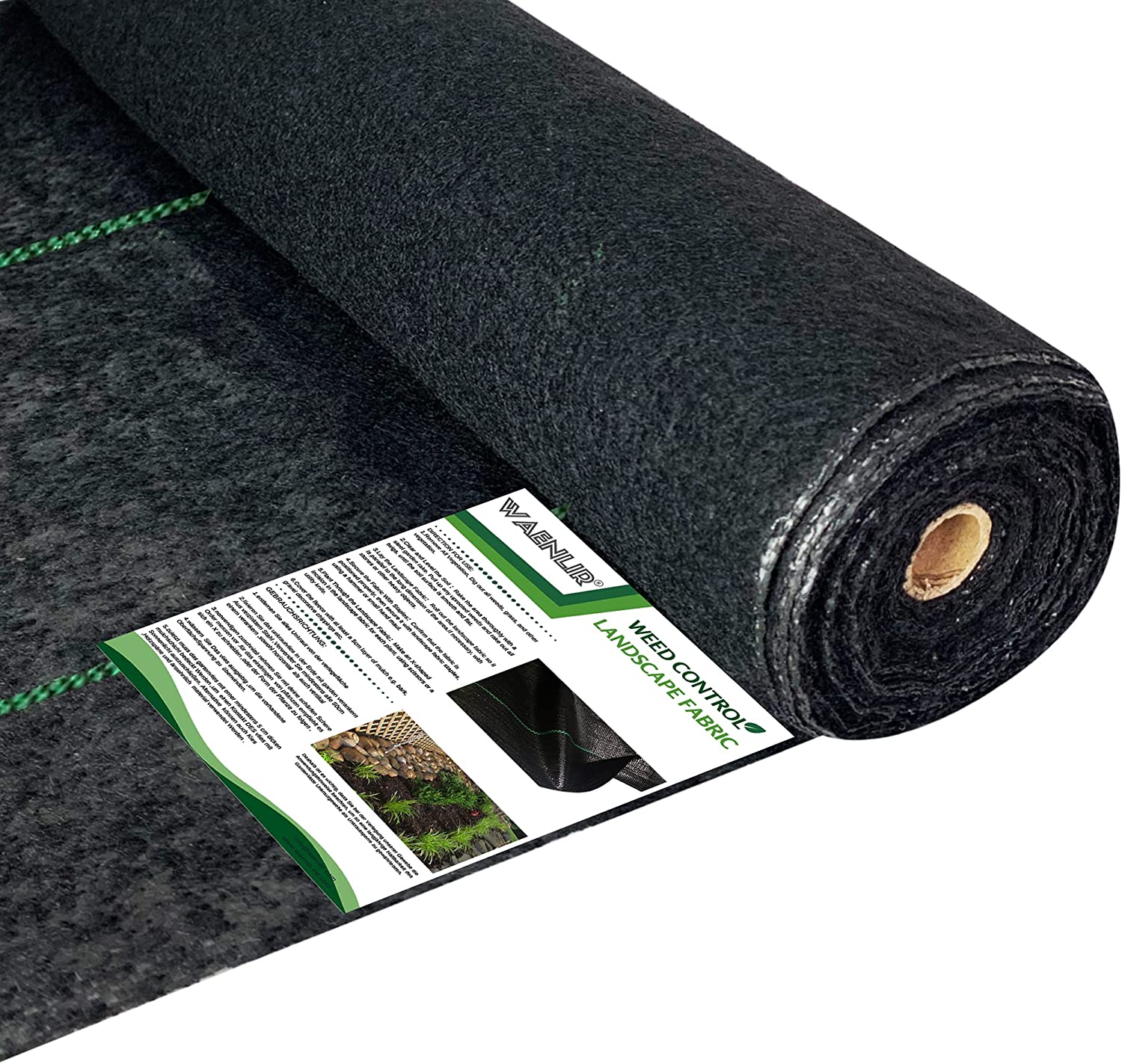
5 Dewitt 12-Year Weed Barrier Fabric 12YR450
This heavy-duty weed mat from Dewitt aims to control weeds before they start growing. Made of nonwoven fabric, it is an excellent heavy-duty choice for use in gardens, under pathways and decks, or under long-term landscapes.
The fabric is created using a spun-bond method, fusing together a three-ply layered weed barrier. Although it’s a nonwoven polypropylene material, it is treated with a hydrophilic treatment to encourage permeability and nutrient flow through the fabric and ensure your intended plants stay healthy. This nonwoven design also prevents the fabric from unraveling, making it easier to cut than woven options. Measuring 4 feet wide by 50 feet long, this heavy-duty fabric is also UV stabilized to help it last over a decade—up to 12 years, according to Dewitt.
IV How We Chose the Best Weed Barrier
There are several important features to consider when choosing a weed barrier, but most gardeners would narrow it down to a couple of features: effectiveness and durability. The weed barriers on this list are made from materials (like polypropylene) that do an excellent job of providing weed control. Durability is also important to home gardeners; no one wants to spend time installing a weed barrier just to have it tear or degrade after only one season.
Based on thorough product research, brand reputation, materials, and online reviews, the weed barriers on this list are durable enough to last several seasons—and some even come with anywhere from 5 to 30 years of guaranteed weed protection. We also included a variety of sizing, barrier types, and UV-protected options on this list to better enable you to find a suitable choice for your garden.
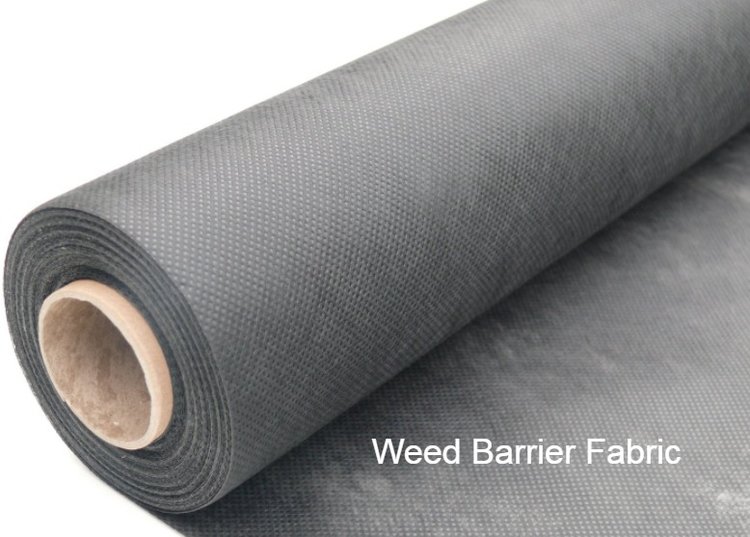
V Introduction for DERFLEX
DERFLEX is a professional manufacturer of . We have our own factory, which is located in Zhejiang province, China , with 7 production lines, the supply capacity is 300,000sqm/month. We can produce different kinds of wide format digital printing media. Such as coated Frontlit, backlit, laminated PVC tarpaulin, blockout,mesh,self-adhesive vinyl, one-way vision, perforate vinyl, wide format print cotton canvas, PVC coated tarpaulin, photo paper, reflective material, projection screen fabric.

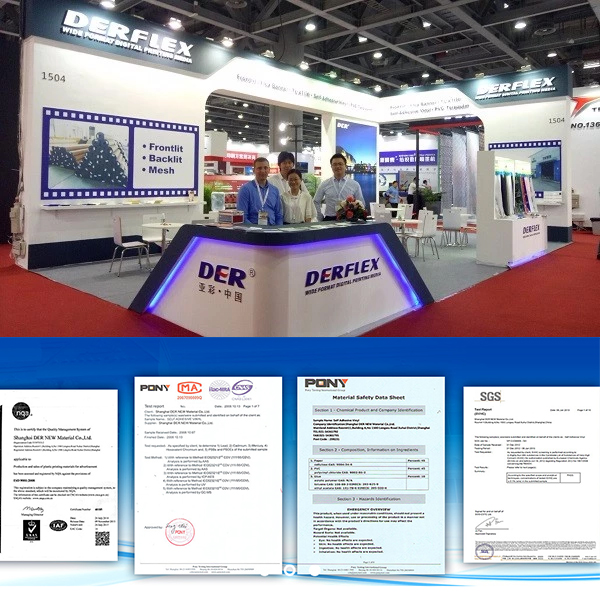
Our main product is PVC tarpaulin and it is widely used as truck/trailer/container cover, tents, pallet cover,strip garden fence,
awnings, inflatable products, adumbral materials for building facility and house.
For further business communication, welcome to contact:
Tel: +8617316447897(whatsapp&wechat)
Email: ellaine@derflex.com
Web: www.derflex.com




